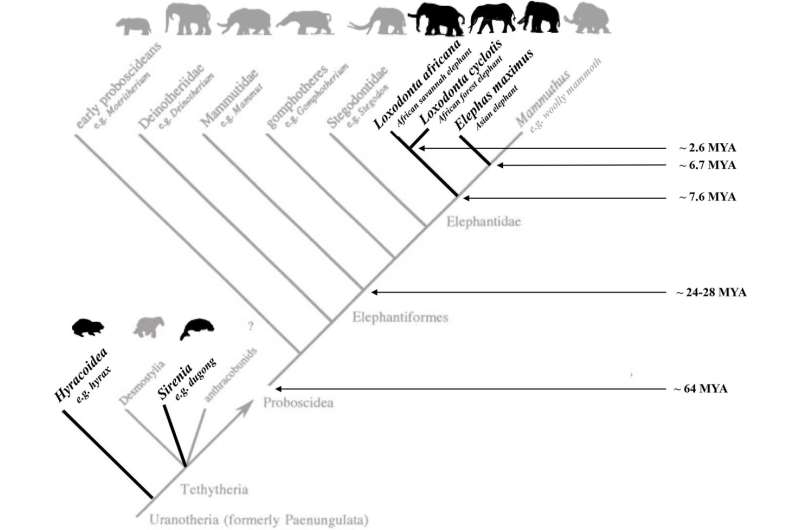April 4, 2023 report
This article has been reviewed according to Science X's editorial process and policies. Editors have highlighted the following attributes while ensuring the content's credibility:
fact-checked
peer-reviewed publication
trusted source
proofread
Comparison with humans and bonobos suggests wild African elephants may have self-domesticated

A team of biologists and linguists from the Max Planck Institute for Psycholinguistics, City University of New York, the State University of New York and the University of Seville has found evidence suggesting that wild African elephants may have self-domesticated. In their study, reported in Proceedings of the National Academy of Sciences, the group compared self-domestication attributes in humans and bonobos with wild elephants and outlined the similarities they found.
Prior research has shown that animals that have been domesticated by humans, such as dogs and cows, have undergone shared physical changes as a result of domestication—they became less aggressive, for example, and developed shortened jawbones. Prior research has also shown that at least two species of animals have undergone self-domestication, whereby they physically changed in ways similar to animals that were domesticated by humans. These two species are humans and bonobos. In this new effort, the research team wondered if there might be other animal species that have self-domesticated over the years. To find out, they opted to study wild African elephants, a species they were already studying for other reasons.
To study the elephants, the group drew up a list of 20 characteristics identified as the result of domestication—either on their own or due to efforts by humans. They then compared those traits between humans, bonobos and wild African elephants. They found many similarities. All three, for example, became more playful over the years; all are social and have long childhoods. All three also play a major role in offspring development and tend to show concern for others in their group. They also note that all three have shorter jaws than their ancestors.
The research team then took another approach—studying the genomes of wild African elephants. Prior research has identified genes associated with domestication and found 79 of them in the wild elephants. The researchers emphasize that they are not suggesting that elephants have been domesticated by humans, but instead have self-domesticated over the course of their relatively recent history. And this, they further suggest, indicates that other species likely have done so, as well.
More information: Limor Raviv et al, Elephants as an animal model for self-domestication, Proceedings of the National Academy of Sciences (2023). DOI: 10.1073/pnas.2208607120
Journal information: Proceedings of the National Academy of Sciences
© 2023 Science X Network




















